The Health and Safety Authority (HSA) aims to carry out 2,000 farm safety inspections throughout the year. The Irish Farmers Journal visited Francis Murray’s dairy farm in Dunleer, Co Louth to find out first-hand what the inspection involves. Martina Gormley from the HSA says the organisation is running a campaign with particular emphasis on livestock handling. She said inspectors arrive on farms during normal working hours. The inspector asks for a copy of a completed risk assessment or safety statement document specific to the farm.
A farm risk assessment document was sent out to every farm in the country and is also available online. Every farmer should have this document filled out and available for inspection. Martina says when filling out the form farmers should walk around their farm and write down anything that needs attention. The inspector may go through the safety statement with the farmer to ensure all safety aspects were taken into consideration.
The HSA has a free safety statement tool for agricultural contractors to prepare their own safety statement at www.BeSMART.ie.
Hazards
After going through the risk assessment document, the inspector will take a trip around the farm to see if there is anything that needs attention. Martina says sometimes people working in the same place day in, day out do not see all the potential hazards around them. “Where an inspector identifies issues that may affect a person’s ability to work safely, the inspector will bring this to the farmer’s attention,” she explained. “In terms of livestock handling, inspectors may check to see that pens, fencing, crushes and skulling gates and other handling facilities and processes are safe and allow safe animal handling,” according to Martina. They will ask what policy is in place for aggressive animals on the farm and how bulls are handled.
Machinery
In terms of machinery, the inspector may check that safety features such as properly guarded PTO shafts on machinery and O guards on tractors are present. The hydraulic system and hoses can be examined for wear or abrasions. Martina said simple things such as damaged steps leading into a tractor cab, or lack of maintenance on braking systems, especially handbrakes, can lead to serious injury. Inspectors also check the floor of the cab for obstructions to the foot pedals. “We discuss how children are monitored on the farm, safe play area for children, away from all work activities and that children are supervised” explained Martina.
Other aspects
Other aspects of farm safety such as IP rated electrical installations, chemical stores and material safety data sheets (MSDS) are monitored. Where there are any work platforms at a height, the inspector will check that safety rails are in place to prevent the risk of falls and that a safe system of work exists for all work at a height. At the end of the inspection, the inspector can give verbal advice on aspects of farm safety that need attention. A written report or notice can also be issued with a deadline to comply with the recommendations. “On re-inspection if the farmer has not made any attempt to comply with the inspector’s recommendations it will be seen as a clear breach of the law and it may be taken further” explained Martina.
Why are these
inspections
taking place
There has been an increased emphasis on farm inspections by the HSA. The inspections are on the spot but according to the HSA are not designed to penalise farmers, rather to make them aware of the dangers. The reason for this is obvious given the large proportion of workplace deaths that are farming related. Last year there were 21 deaths on farms out of a total of 44 workplace accidents. “The inspections are really for farmers’ best interests. There shouldn’t be anything to fear from these inspections and the main idea is to focus people’s minds on safety,” said Martina. Francis said like all farmers he would prefer not to have inspections but he did not find this one too onerous. “In fairness, it does make you more aware of the hazards on your farm and encourages you take corrective measures where needed and that can only be a good thing,” said Francis.
The Health and Safety Authority (HSA) aims to carry out 2,000 farm safety inspections throughout the year. The Irish Farmers Journal visited Francis Murray’s dairy farm in Dunleer, Co Louth to find out first-hand what the inspection involves. Martina Gormley from the HSA says the organisation is running a campaign with particular emphasis on livestock handling. She said inspectors arrive on farms during normal working hours. The inspector asks for a copy of a completed risk assessment or safety statement document specific to the farm.
A farm risk assessment document was sent out to every farm in the country and is also available online. Every farmer should have this document filled out and available for inspection. Martina says when filling out the form farmers should walk around their farm and write down anything that needs attention. The inspector may go through the safety statement with the farmer to ensure all safety aspects were taken into consideration.
The HSA has a free safety statement tool for agricultural contractors to prepare their own safety statement at www.BeSMART.ie.
Hazards
After going through the risk assessment document, the inspector will take a trip around the farm to see if there is anything that needs attention. Martina says sometimes people working in the same place day in, day out do not see all the potential hazards around them. “Where an inspector identifies issues that may affect a person’s ability to work safely, the inspector will bring this to the farmer’s attention,” she explained. “In terms of livestock handling, inspectors may check to see that pens, fencing, crushes and skulling gates and other handling facilities and processes are safe and allow safe animal handling,” according to Martina. They will ask what policy is in place for aggressive animals on the farm and how bulls are handled.
Machinery
In terms of machinery, the inspector may check that safety features such as properly guarded PTO shafts on machinery and O guards on tractors are present. The hydraulic system and hoses can be examined for wear or abrasions. Martina said simple things such as damaged steps leading into a tractor cab, or lack of maintenance on braking systems, especially handbrakes, can lead to serious injury. Inspectors also check the floor of the cab for obstructions to the foot pedals. “We discuss how children are monitored on the farm, safe play area for children, away from all work activities and that children are supervised” explained Martina.
Other aspects
Other aspects of farm safety such as IP rated electrical installations, chemical stores and material safety data sheets (MSDS) are monitored. Where there are any work platforms at a height, the inspector will check that safety rails are in place to prevent the risk of falls and that a safe system of work exists for all work at a height. At the end of the inspection, the inspector can give verbal advice on aspects of farm safety that need attention. A written report or notice can also be issued with a deadline to comply with the recommendations. “On re-inspection if the farmer has not made any attempt to comply with the inspector’s recommendations it will be seen as a clear breach of the law and it may be taken further” explained Martina.
Why are these
inspections
taking place
There has been an increased emphasis on farm inspections by the HSA. The inspections are on the spot but according to the HSA are not designed to penalise farmers, rather to make them aware of the dangers. The reason for this is obvious given the large proportion of workplace deaths that are farming related. Last year there were 21 deaths on farms out of a total of 44 workplace accidents. “The inspections are really for farmers’ best interests. There shouldn’t be anything to fear from these inspections and the main idea is to focus people’s minds on safety,” said Martina. Francis said like all farmers he would prefer not to have inspections but he did not find this one too onerous. “In fairness, it does make you more aware of the hazards on your farm and encourages you take corrective measures where needed and that can only be a good thing,” said Francis.








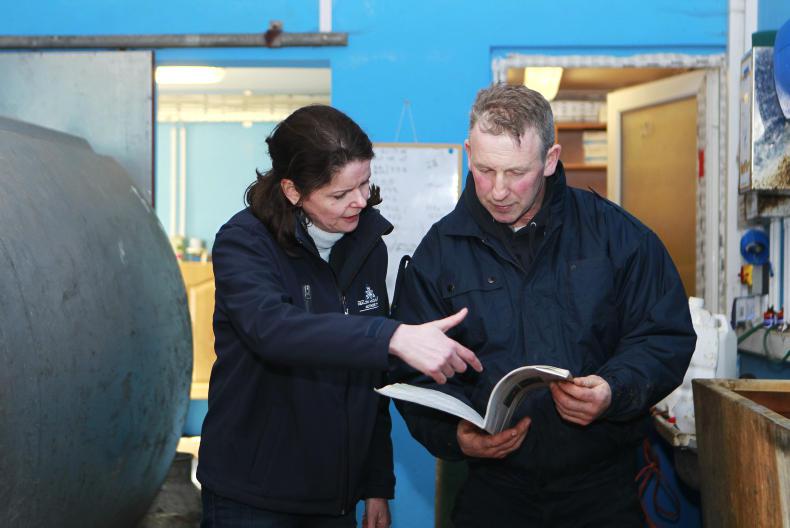
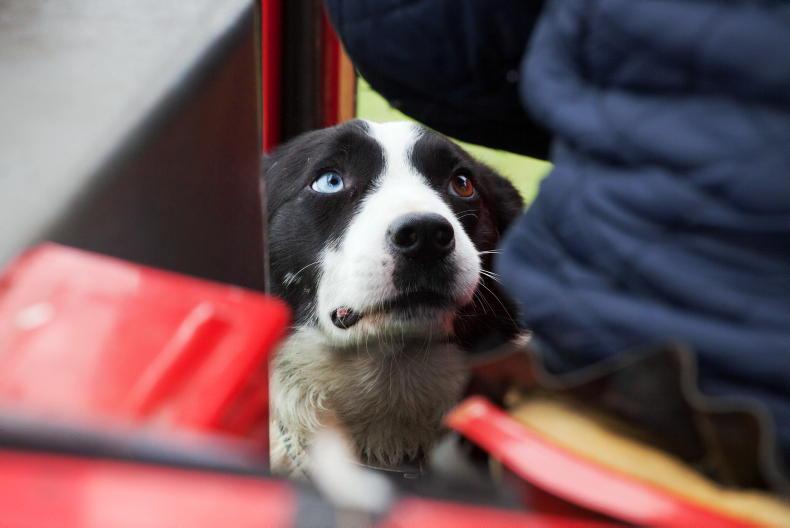
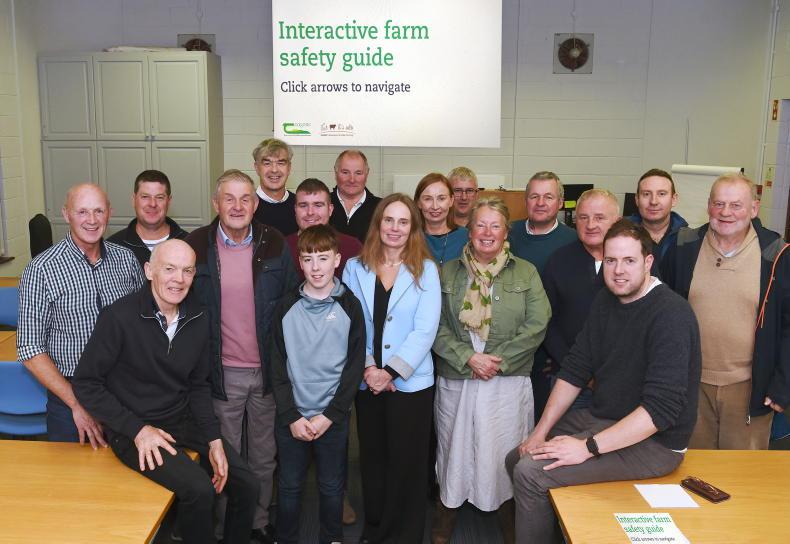
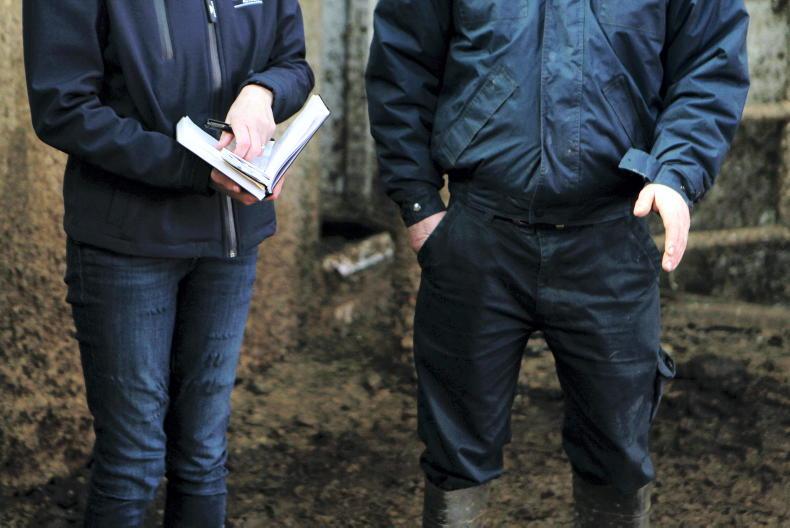
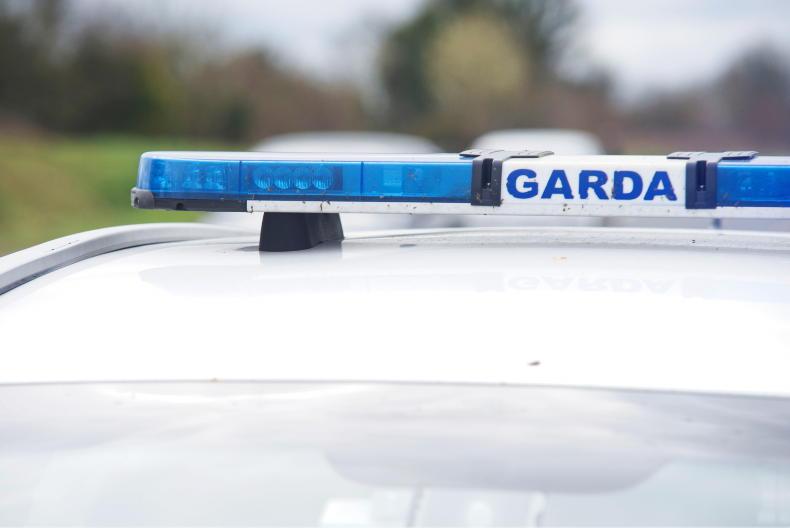
SHARING OPTIONS